
Perennial Forbs Around Las Vegas, Vegetation Around Las Vegas
 |
General: King Bladderpod (Lesquerella kingii) is a perennial forb that grows from a large root (caudex). Several round, densely hairy leaves with relatively long petioles are produced from the root. In the spring, yellow, 4-petaled flowers are produced. These in turn produce inflated bean pods (bladder pods). King Bladderpod is a fairly common component of mountain vegetation communities in the Upper Sonoran (Pinyon-Juniper Woodland), Transition (Yellow Pine Forest), Canadian (Pine-Fir Forest), Hudsonian (Bristlecone Pine Forest), and Alpine (Tundra) life zones. Around Las Vegas, look for this species up in the mountains such as on Mt. Charleston in the Spring Mountains and the Sheep Range on the Desert National Wildlife Range. Family: Mustard (Brassicaceae). |
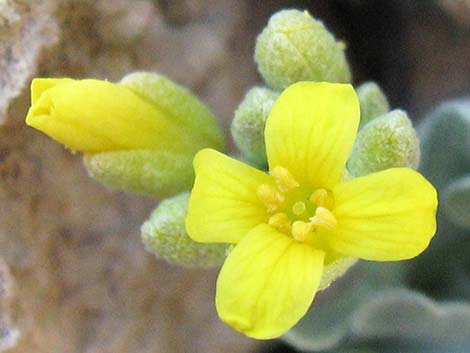 |
Other Names: Physaria kingii, King's bladderpod. Plant Form: Perennial forb. Height: To about 8 inches. Stems: To about 7 inches long (may be prostrate); few to many. Leaves: Basal leaves oval to round with a long petiole; cauline leaves oval, short-petioled. |
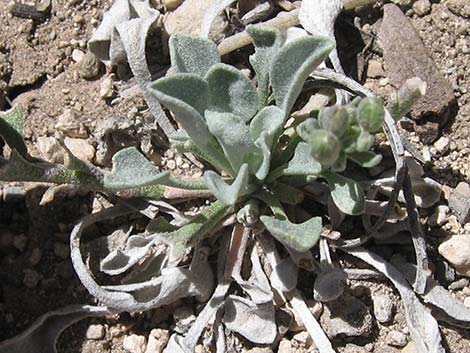 |
Flowers: Blooms in the spring and early summer. Inflorescence: raceme (flowers come off a stalk). Flowers are yellow with 4 petals. Seeds: Habitat: Dry mountain sites. Elevation: To about 5,000 to 9,000 feet. Distribution: California to Idaho and Utah. Comments: |
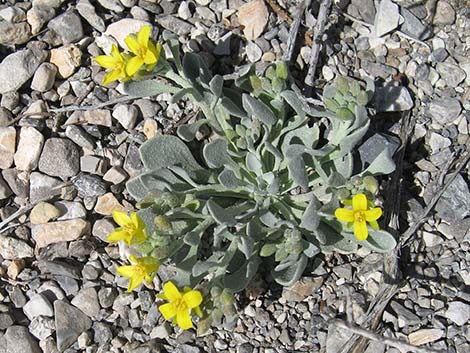 |
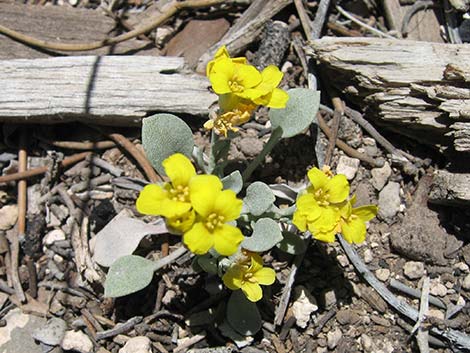 |
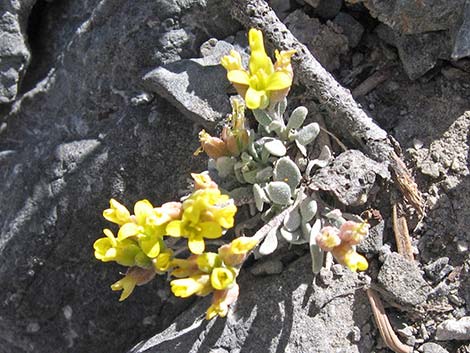 |
 |
 |
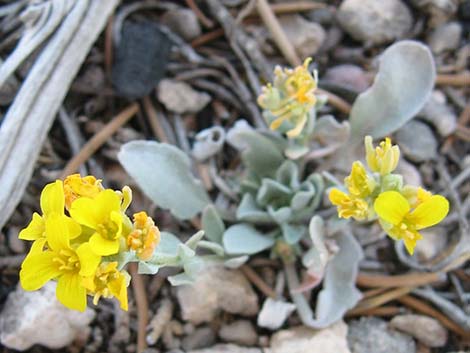 |
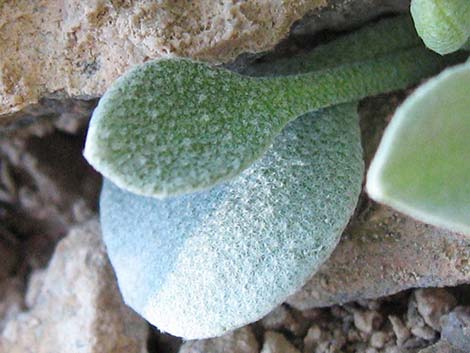 |
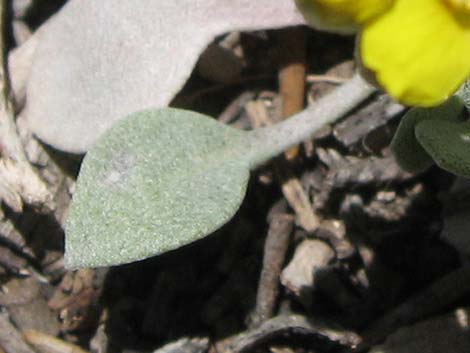 |
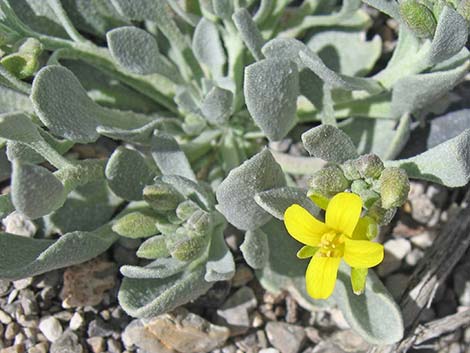 |
 |
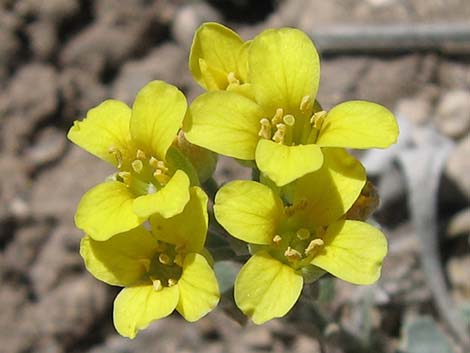 |
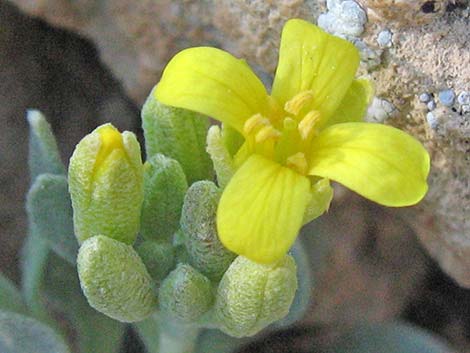 |
Note: All distances, elevations, and other facts are approximate. Names generally follow the USDA database.
![]() ; Last updated 211228
; Last updated 211228
| All Perennial Forbs | Plant Species Index | Glossary | Copyright, Conditions, Disclaimer | Home |